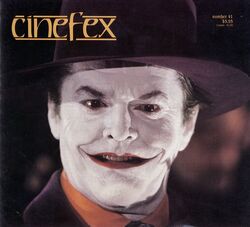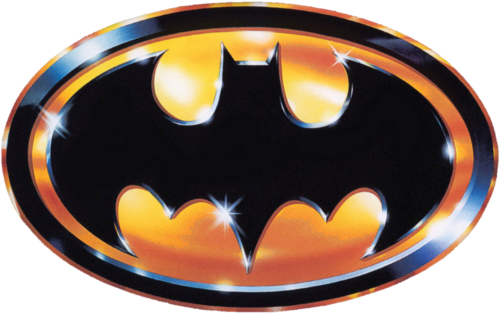Cinefex 41's Batman feature by Jody Duncan Shannon.

Notable quotes excerpts
Batsuit construction
Ringwood had originally planned to make the headpiece and the cape as one unit, but reconsidered when it became apparent that the headpiece was particularly vulnerable to damage. To avoid having to replace the cape every time the headpiece was replaced - which was often - the two were made separately, then attached each time the suit was put on by gluing a scallopshaped collar at the bottom of the headpiece onto the shoulder section of the cape.
The cape itself - though seemingly the least complicated part of the Batman costume - was actually the most problematic. "The cape was by far the most difficult thing to construct. We tried making a cape of pure rubber - to match the rubberized look of the rest of the costume - but we found that it moved in a very unattractive way, rippling rather than swinging. So then we did a variety of tests with different fabrics, trying to find something that would move in the way we wanted. What we came up with was a venetian wool that is very heavy and luxurious and expensive. To match it to the rest of the costume, we sprayed wet rubber onto glass and then vary carefully laid the woolen fabric down and smoothed it out with rollers. After the rubber set, we would peel the whole thing off the glass and the fabric would be bonded to the back of it. The only problem with it was that we could not sew it together. The cape had been constructed in segments like an orange - each piece going out from the center - but we could not sew those sections together without getting terribly heavy, dutzy-Iooking seams. So we got Paul Barrett Brown, who is a rubber specialist - he makes rubber fetish clothes for the sex market, so he knew an awful lot about rubber - and we put this problem to him. He suggested that we make an enormous table covered in highly polished vinyl. The table was fourteen feet in diameter and, like the cape, was constructed in orangelike segments. We sprayed the rubber on this enormous table and the fabric was cut to fit each segment exactly - without any overlap - so the seams just butted up together. So it was the rubber itself that bonded the cape. We then reinforced the seam areas just slightly with a very fine piece of silk gauze which was laid right into the rubber. That worked beautifully - we were able to construct this enormous cape without any sewing on it at all."
Because of its weight, attaching the cape to the costume required extensive hardware. "Michael wore a body harness underneath the costume," Ringwood explained. "The body harness had two bolts at the shoulders and the cape was literally screwed into those bolts on each side. The hardware was covered by the bat symbol which was bolted onto the chest. So there was a lot of understructure holding the cape in place - if there had not been, the weight of it when he swung around would have torn the entire costume right off of his body."
Once the prototype was perfected, several capes of varying lengths were produced. "We made thirty-five or forty capes all together. Some of them were about five feet long, reaching from Michael's neck to the ground. others were a bit shorter so that he could get in and out of the batmobile easily. Then, for shots where he is flying up a wire or floating down into a scene, we made capes that were eight to ten feet long, just for the visual effect. We used a a lighter-weight material for those so that the cape would lift and flow nicely in flight. In some instances we even used a parachute material."
